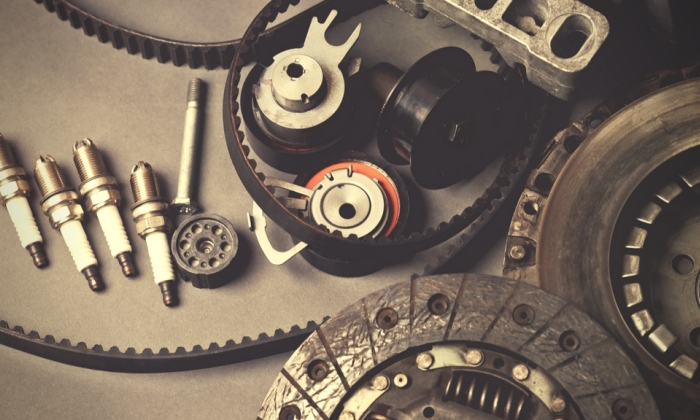Inserting connecting pins – when every millimeter counts


Pin insertion, a standard technique in precision installation, demands sensitivity and millimeter tolerances. It has resisted automation, but thanks to six-axis force/torque sensors, that is now changing.
The average automobile today consists of up to 10,000 individual parts. To turn this immense number of individual components into a complete and functional vehicle requires nearly as huge a number of installation steps. Absolute precision is a fundamental essential: If just a single part isn’t sitting exactly where it belongs or gets out of alignment during installation, that threatens not only the cost-effectiveness of the manufacturer’s production processes, but in the worst case can even endanger the end customer.
Of course, this is not only true of the automobile industry but also for most high-tech products, all of which are now highly individualized, starting from huge numbers of small parts.
Efficient fine and precision installation is therefore a central factor in manufacturing them.
Irregularities require adaptability
A good example is the insertion of pins into close-fitting openings – an important standard process in the production industry. At the same time, tolerances are often relatively narrow: soft materials, deformation due to temperature fluctuations, and even minimally irregular workpieces require a high degree of adaptability during pin insertion.
If we want to automate the process, the lack of standardization therefore represents a challenge for industrial robots, which can provide a high degree of reproducibility, but may not necessarily have the required responsiveness and intelligence.
The insertion of pins requires sensitive millimeter-scale work. The human hand can quickly find the right approach point simply by trying it out. A conventional robot arm designed for precisely positioned fixed waypoints cannot.
OptoForce made it their goal to change this situation. This Hungarian company manufactures force/torque sensors for industrial robots. Robots by Universal Robots, KUKA, and ABB can be extended with the high-precision HEX-E and HEX-H sensors to give them a fine sense of touch. This allows them to react to their surroundings: They perceive the slightest resistance and make the corresponding course corrections in real time.
For precision installation, that’s gold. The capability of using the sense of touch expands the options for automation and allows companies to automate monotonous, repetitive work, for which human resources are hard to find.
The improved productivity and product quality at simultaneously lower costs means an added value for companies of up to 100,000 EUR per year for each robot system implemented.
The cost remains astoundingly low. Not only are the sensors powerful hardware, they also include a comprehensive software package of standard industrial applications. The “Pin Insertion” application allows inserting pins into openings to be automated in just a few steps.

|
Cách phát triển doanh nghiệp của bạn với các ứng dụng cộng tác
Với sự khởi đầu của công cụ thông minh hơn và có khả năng thích ứng cao hơn, giờ đây rô-bốt có thể hoạt động với tốc độ, sức mạnh, sự an toàn và độ chính xác cao hơn, hoàn thành một loạt các nhiệm vụ trong khi vẫn tối đa hóa ROI. Tìm hiểu thêm về cách bạn có thể cho phép sản xuất nhanh hơn với chi phí thấp hơn bằng cách tải sách điện tử miễn phí của chúng tôi về.
NHẬN SÁCH ĐIỆN TỬ MIỄN PHÍ
|

|

